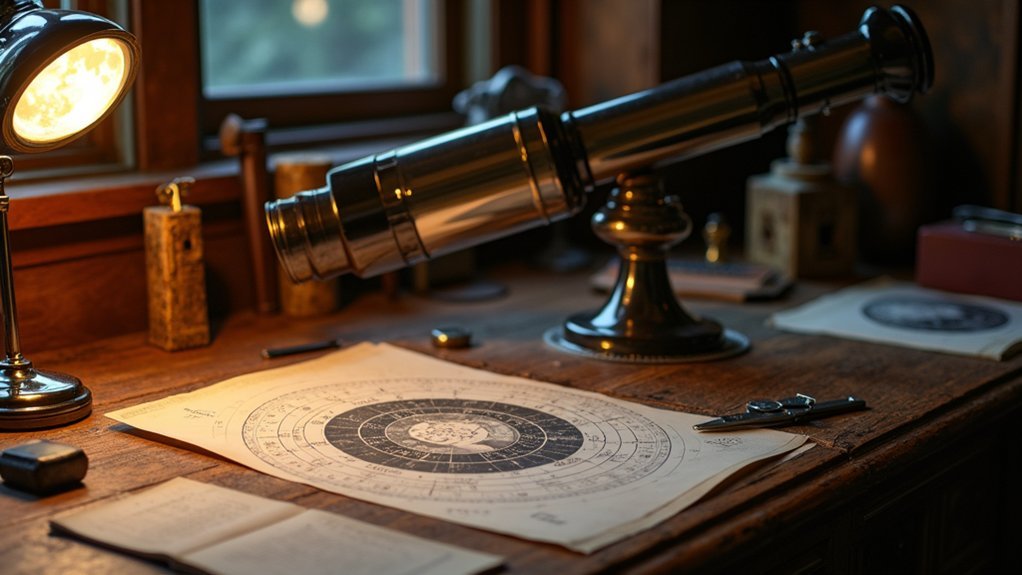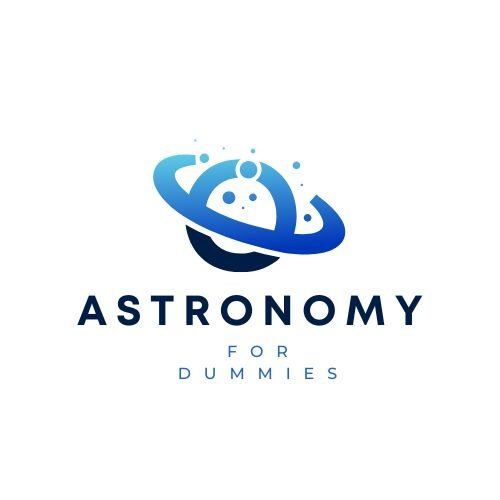Astronomers calculate moon phases by tracking the angular separation between the Sun and Moon. Start with a known New Moon date, then divide the days elapsed by 29.53 (the synodic month) to find the current phase position. For precision, you’ll need to account for the Moon’s elliptical orbit using trigonometric functions. Modern tools like Skyfield or JPL Horizons can handle these complex calculations automatically. The full methodology reveals a fascinating blend of simple principles and sophisticated mathematics.
Understanding the Lunar Cycle Fundamentals

The rhythm of the Moon’s journey forms the very foundation of our timekeeping. Our word “month” evolved from “Moonth,” reflecting the 29.5-day lunar cycle that has guided humanity for millennia.
You’ll notice four major phases of the moon: New Moon (when it rises with the Sun), First Quarter (rising at noon), Full Moon (rising at sunset), and Last Quarter (rising at midnight). Each phase occurs at specific angles between the Moon, Earth, and Sun.
The Moon travels west to east, advancing about 14° eastward daily while following a path inclined 5° to the ecliptic plane. This creates predictable north-south shifts in its position.
The Moon’s steady eastward trek carves a 5° inclined path across our sky, creating the cosmic dance we’ve tracked since time immemorial.
Understanding these patterns enables precise agricultural planning and timing of cultural events. By mastering lunar cycle fundamentals, you’ll connect with celestial rhythms that have guided civilizations throughout history.
Essential Equations for Moon Phase Prediction
Predicting lunar phases requires several mathematical tools that transform astronomical observations into precise forecasts. To calculate the moon phase, you’ll need to determine the difference in ecliptic longitude between the Moon and Sun. This angle reveals where we’re in the lunar phase cycle: 0° marks a New Moon, while 180° indicates a Full Moon.
The foundation of these calculations is the synodic month—approximately 29.53 days—which serves as your baseline. Using a known reference date of a New Moon, you can apply remainder calculation by dividing the number of days elapsed by the synodic month length.
Modern astronomical algorithms, like those developed by Jean Meeus, incorporate trigonometric functions to account for orbital variations, delivering accuracy that basic methods can’t match.
Step-by-Step Calculation Methodology

When approaching moon phase calculations, you’ll need to follow a systematic process that transforms complex astronomical relationships into practical results. Start by identifying a known New Moon date, then calculate days elapsed since that reference point. Divide by the synodic month (29.53 days) and use the remainder to determine the current phase.
| Step | Action | Result |
|---|---|---|
| 1 | Identify reference New Moon | Establishes baseline date |
| 2 | Calculate days elapsed | Determines progress through cycle |
| 3 | Measure angular distance | Reveals exact phase (0° New Moon, 180° Full Moon) |
| 4 | Convert to local time | Provides practical observation timing |
For greater precision, use Python libraries like Skyfield to handle orbital mechanics automatically. This approach accounts for the Moon’s elliptical orbit and nodal precession while delivering results you can apply to real-world observations.
Accounting for Orbital Variations and Accuracy
While basic phase calculations provide good approximations, achieving high precision requires addressing the Moon’s complex orbital behavior.
You’ll need to account for the Moon’s elliptical orbit and variations in orbital eccentricity and inclination that affect lunar phases. The synodic month averages 29.53 days, but this period drifts slightly due to gravitational influences from other celestial bodies.
For high-precision calculations, simple formulas won’t suffice beyond their intended range. Instead, implement complex trigonometric functions that factor in the Moon’s position relative to Earth and Sun.
Consider using algorithms developed by Jean Meeus, which incorporate important astronomical phenomena like precession and nutation. These sophisticated methods will help you maintain accuracy when calculating lunar phases over extended timeframes, ensuring your predictions remain reliable despite orbital variations.
Tools and Resources for Precise Lunar Calculations

For astronomers and enthusiasts seeking the highest accuracy in lunar phase predictions, several specialized tools and software packages have emerged as industry standards. Jean Meeus’s algorithms remain the foundation for precise lunar calculations, offering reliable methods using geocentric ecliptic longitudes.
| Resource | Best For | Technical Level |
|---|---|---|
| Python libraries (Skyfield, Astropy) | Modern astronomical calculations | Intermediate |
| JPL Horizons | Long-term moon phase determination | Advanced |
| John Walker’s Moontool | Educational lunar phase calculations | Beginner |
When implementing these tools, you’ll find the Explanatory Supplement to the Astronomical Almanac invaluable for understanding the mathematical foundations. This thorough reference outlines necessary trigonometric functions for accuracy. Whether you’re coding your own solution or utilizing existing platforms, these resources guarantee your lunar calculations achieve professional-grade precision.
Frequently Asked Questions
How Do You Calculate Moon Phases?
You’ll calculate moon phases by measuring the angle between the Moon and Sun along the ecliptic. Track days since a known New Moon, or use astronomical libraries like Skyfield for precise calculations.
What Is the Easiest Way to Memorize the Moon Phases?
To memorize moon phases easily, use the “New First Full Last” mnemonic for primary phases. Remember waxing (growing) comes before Full Moon and waning (shrinking) follows. Watch the Moon regularly to reinforce your understanding.
How Can You Predict the Moon’s Phases?
You can predict moon phases by tracking the 29.5-day lunar cycle. Calculate the days from a known New Moon date, divide by 29.5, and use the remainder to determine the current phase position.
How Do You Model the Moon Phases?
You’ll model moon phases by calculating the angular differences between the Moon and Sun as seen from Earth. You can use algorithms like Meeus’s or libraries like Skyfield for accurate predictions.
In Summary
You’ve now mastered the astronomer’s approach to calculating moon phases. By understanding the lunar cycle fundamentals, applying the essential equations, and following the step-by-step methodology, you’ll predict phases with impressive accuracy. Don’t forget to account for orbital variations to refine your calculations. With practice and the right tools, you’ll track the moon’s journey like a professional—no telescope required, just your mathematical prowess.





Leave a Reply